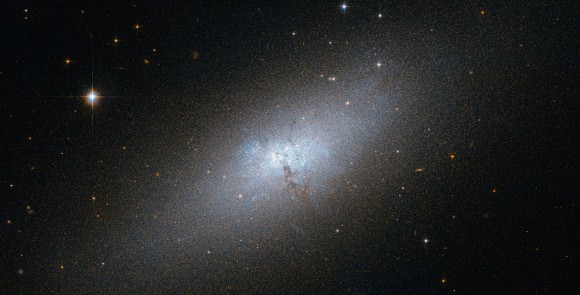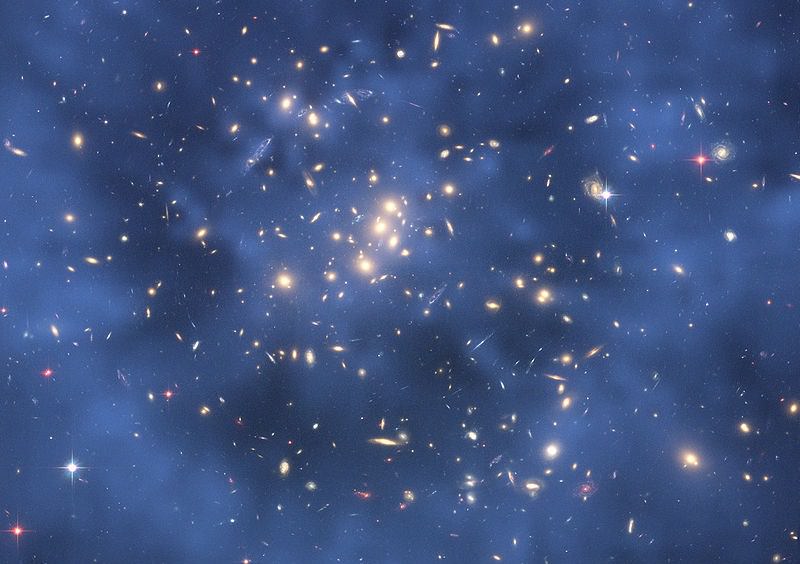Dark Matter is rightly called one of the greatest mysteries in the Universe. In fact, so mysterious is it, that we here in the opulent sky-scraper offices of Universe Today often joke that it should be called “Dark Mystery.” But that sounds like a cheesy History Channel show, and here at Universe Today we don’t like cheesy, so Dark Matter it remains.
Though we still don’t know what exactly Dark Matter is, we keep learning more about how it interacts with the rest of the Universe, and nibbling around at the edges of what it might be. But before we get into the latest news about Dark Matter, it’s worth stepping back a bit to remind ourselves of what is known about Dark Matter.
Evidence from cosmology shows that about 25% of the mass of the Universe is Dark Matter, also known as non-baryonic matter. Baryonic matter is ‘normal’ matter, which we are all familiar with. It’s made up of protons and neutrons, and it’s the matter that we interact with every day.
Cosmologists can’t see the 25% of matter that is Dark Matter, because it doesn’t interact with light. But they can see the effect it has on the large scale structure of the Universe, on the cosmic microwave background, and in the phenomenon of gravitational lensing. So they know it’s there.
Large galaxies like our own Milky Way are surrounded by what is called a halo of Dark Matter. These huge haloes are in turn surrounded by smaller sub-haloes of Dark Matter. These sub-haloes have enough gravitational force to form dwarf galaxies, like the Milky Way’s own Sagittarius and Canis Major dwarf galaxies. Then, these dwarf galaxies themselves have their own Dark Matter haloes, which at this scale are now much too small to contain gas or stars. Called dark satellites, these smaller haloes are of course invisible to telescopes, but theory states they should be there.
But proving that these dark satellites are even there requires some evidence of the effect they have on their host galaxies.
Now, thanks to Laura Sales, who is an assistant professor at the University of California, Riverside’s, Department of Physics and Astronomy, and her collaborators at the Kapteyn Astronomical Institute in the Netherlands, Tjitske Starkenberg and Amina Helmi, there is more evidence that these dark satellites are indeed there.
In their paper “Dark influences II: gas and star formation in minor mergers of dwarf galaxies with dark satellites,” from November 2015, they provide an analysis of theory-based computer simulations of the interaction between a dwarf galaxy and a dark satellite.
Their paper shows that when a dark satellite is at its closest point to a dwarf galaxy, the satellite’s gravitational influence compresses the gas in the dwarf. This causes a sustained period of star formation, called a starburst, that can last for billions of years.

Their modelling suggests that dwarf galaxies should be exhibiting a higher rate of star formation than would otherwise be expected. And observation of dwarf galaxies reveals that that is indeed the case. Their modelling also suggests that when a dark satellite and a dwarf galaxy interact, the shape of the dwarf galaxy should change. And again, this is born out by the observation of isolated spheroidal dwarf galaxies, whose origin has so far been a mystery.
The exact nature of Dark Matter is still a mystery, and will probably remain a mystery for quite some time. But studies like this keep shining more light on Dark Matter, and I encourage readers who want more detail to read it.

